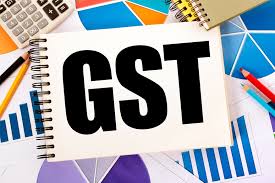Infosys row: The unanswered questions on the tax portal
Equating perceived incompetence with extremist motives such as an anti-national agenda to destabilise the economy is unpardonable when commenting on icons such as Nandan Nilekani, Infosys, or the information technology (IT) industry in general. The industry’s contribution to India’s progress is a fact that merits no repetition.
A recent article published in the Rashtriya Swayamsevak Sangh-affiliated Panchajanya calling Infosys “anti-national” for glitches in the new income tax portal must be condemned, as finance minister Nirmala Sitharaman rightly did this week. However, the fundamental issues with the portal cannot be ignored. These include basic areas such as logins, e-filing, integration with different databases such as 26AS, and pending actions, including the ability to respond to notices, squaring up demands and so on. The criticism is thus valid, but against whom should it be directed?
Surely, Infosys must accept a fair share of the blame as the prime contractor which signed up for a legally binding contract. Thus, delays in execution reflect poorly on its programme management competencies.
In its keenness to win the order in 2019, it most likely compromised even on basics such as adopting the “waterfall” design method to align itself with the government’s norms of a fixed-price contract on an L1 basis.
This inference is being drawn since the contemporary agile DevOps methodology used for such transformational projects would have highlighted the issues — in small batches and regular intervals — fairly early in the process of development rather than in one cluster post-project release, as is presently happening due to the adoption of the waterfall method.
Simply put, the agile method is not compatible with an L1 fixed-contract process followed by the government. This is because flexible design, based on stage-wise development, requires additional work orders to accommodate changes arising out of the results of each stage.
The government, on its part, must clarify whether the specifications were fully scoped out and not arbitrarily imposed later. The guiding principle of this dispensation has been a lack of attention to detail in decision-making, based primarily on populism. Hence, unrealistic time schedules for project completion with quixotic — though popular — features would have been an obvious casualty. Key changes in the Central Board of Direct Taxes (CBDT) could also have impacted project ownership.
The core problem is that, for a project failure of such magnitude, impacting 60 million taxpayers, there has been no transparency whatsoever — on either the reasons or the road map for its resolution — in the public domain. Summoning the chief executive of Infosys for a public dressing down will not achieve the objectives of transparency and accountability.
There are many unanswered questions that would have helped decipher this fiasco. One, is there a defined programme manager in the government who is accountable for the success of the project? Any technology project — and transformational projects, in particular — depends on continuous two-way communication and frequent interactions between the client and the tech partner. Incentives of programme managers on both sides need strict alignment to ensure the project’s success. This is different from traditional supply contracts for tangibles in the manufacturing domain.
Two, Infosys is a global leader in managing digital transformation projects where merit is the key component for success. Its competency in the banking, financial services and insurance (BFSI) domain is legendary and, though this project is not strictly BFSI, the skills are similar. Hence, it is difficult to fathom the abject failure being solely attributed to them.
Three, what is most surprising is that the earlier tax portal was flawlessly executed a decade earlier, when the transition from a manual system was far more difficult to execute. The income tax department officer who managed it successfully is currently a chief commissioner of income tax and such gems are available in the system. Also, population-level apps such as the CoWIN portal were quickly implemented despite initial problems.
It is not widely known that applications such as Unified Payments Interface and real-time gross settlement work on a Reserve Bank of India core banking and treasury system. This allows real-time settlements integrating 1,100 clearing houses and 4,400 currency chests, developed 10 years ago by Intellect Design — a high-tech Indian company with a global footprint. Hence, skills do exist in our eco system for the government to effectively cooperate, as in the past, with the domestic IT sector on large transformational projects, and, therefore, this failure needs an explanation from this standpoint too.
Four, why aren’t the government and Infosys making a joint statement as partners in this project? The silence is deafening and the approach of public summoning reflects a hierarchical mindset, which will make it more difficult to find solutions, as the bureaucracy picks up the political message and toes the adversarial line of engagement.
The impact of this fiasco on law-abiding assessees must be the sole factor in finding solutions. For example, notices are being issued with no notifications on email. Assessees will, thus, be in default if they do not log in to the portal daily and will be subject to penalties and fines. The Government of India must instruct CBDT that no penal action will be taken for non-compliance due to these glitches for genuine assessees.
Since the old system has been decommissioned, due dates for filing income tax returns have now been extended. A high-ranking official must be made accountable to interact with Infosys and publicly share the details of progress periodically until the portal stabilises. Public shaming, random announcements, and holding on to perceived prestige will not help.
Download our App to get knowledge updates: https://play.google.com/store/apps/details?id=com.app.gstmitra
Join Our Telegram Channel for more updates:https://t.me/praveengst




Comments
Post a Comment